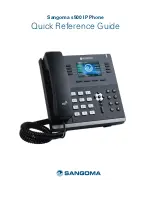
3. TECHNICAL BRIEF
- 18 -
(2) Transmitter Part
The transmit (Tx) section consists of an I/Q baseband upconverter, and offset phase-locked loop
(OPLL) and two output buffers that can drive external power amplifiers (PA), one for the GSM 850
(824-849 MHz) and E-GSM 900 (880-915 MHz) bands and one for the DCS 1800 (1710-1785 MHz)
and PCS 1900 (1850-1910MHz) bands.
A. IF Modulator
The baseband converter(BBC) within the GSM chipset generates I and Q baseband signals for the
Transmit vector modulator. The modulator provides more than 40dBc of carrier and unwanted
sideband rejection and produces a GMSK modulated signal. The baseband software is able to cancel
out differential DC offsets in the I/Q baseband signals caused by imperfections in the D/A converters.
The Tx-Modulator implements a quadrature modulator. A quadrature mixer upconverts the differential
in-phase (TXIP, TXIN) and quadrature (TXQP, TXQN) signals with the IFLO to generate a SSB IF
signal that is filtered and used as the reference input to the OPLL.
The IFLO frequency is generated between 766 and 896 MHz and internally divided by 2 to generate
the quadrature LO signals for the quadrature modulator, resulting in an IF between 383 and 448 MHz.
For the E-GSM 900 band, two different IFLO frequencies are required for spur management.
Therefore, the IF PLL must be programmed per channel in the E-GSM 900 band.
÷ 2
BBG[1:0]
FIF[3:0]
TXBAND[1:0]
PDIB
PDRB
SWAP
TXIP
TXIN
I
Q
TXQP
TXQN
÷ 1,2
REG
RFOG
RFOD
REG
Figure. 3-3 SI4205 TRANSMITTER PART
Summary of Contents for C1150
Page 1: ...Service Manual Model C1150 Service Manual C1150 Date October 2005 Issue 1 0 ...
Page 3: ......
Page 99: ...Note 100 ...
Page 104: ... 105 8 PCB LAYOUT 8 PCB LAYOUT ...
Page 105: ... 106 8 PCB LAYOUT ...
Page 113: ...10 STAND ALONE TEST 114 Figure 10 2 HW test setting Figure 10 3 Ramping profile ...
Page 117: ...Note 118 ...
Page 119: ... 120 Note ...
Page 135: ...Note 136 ...
















































